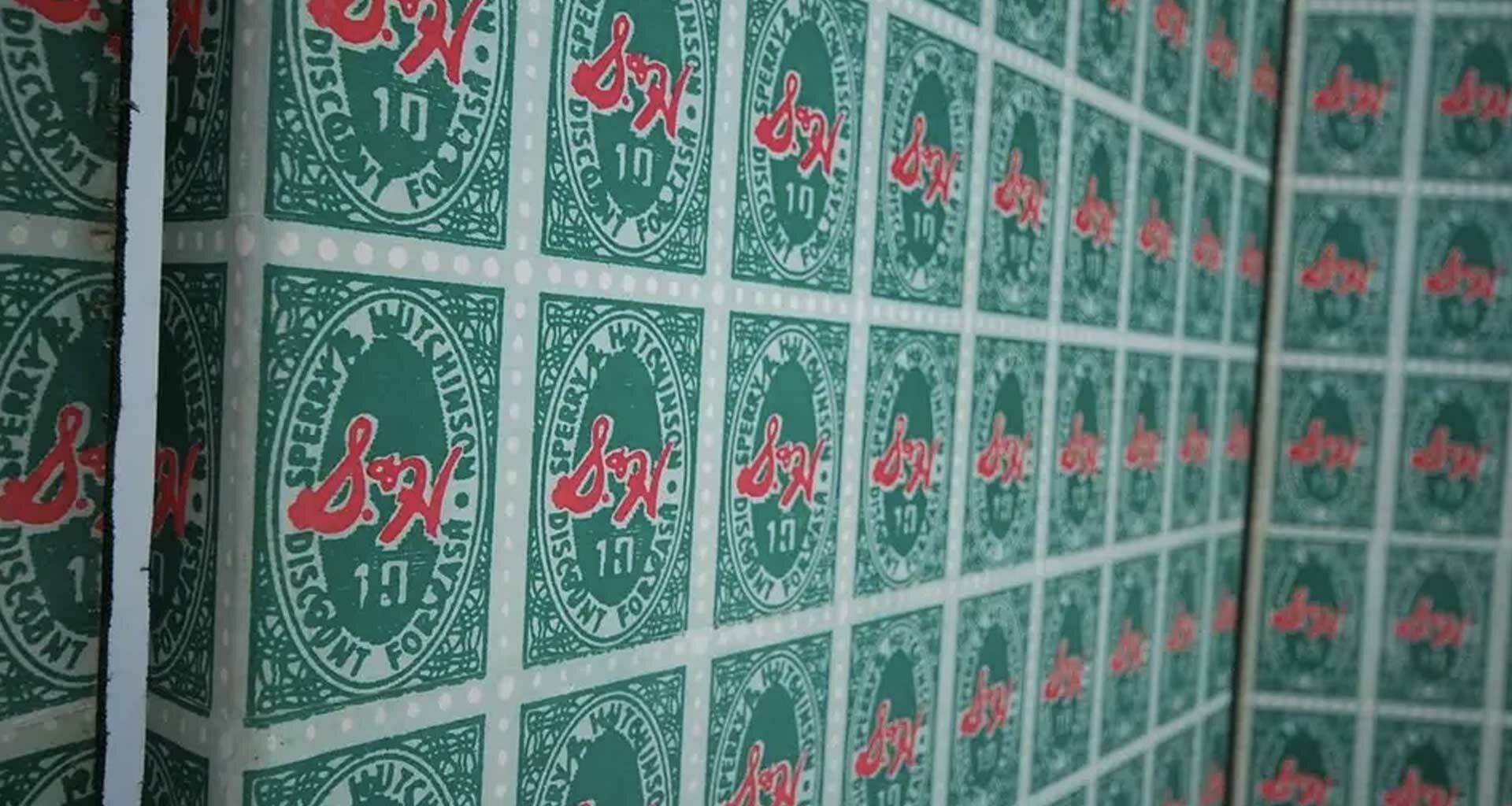We released our 25th annual 2021 Customer Loyalty Engagement Index this week and it brought to mind the name Tom McCann.
No, not the shoe brand. That’s “Thom” with an “h” and “McAn” with only one “n.” No, this Tom McCann, was a friend, colleague, and mentor. He was, by very nearly any reckoning, a promotional genius and the guy who invented the loyalty-points mileage concept. No really, for American Airlines, aka the “AAdvantage program,” and the very first of its kind. Yeah, today it seems like a conventional strategy and tactic, but he was the guy and I was in the room when he came up with the idea. When he did, it floored us. And the industry and the world of loyalty.
It was – or will be – 40 years ago, May 1981, during the desperate search for some form of competitive differentiation and advantage following the airline industry’s 1979 deregulation. And sure, it wasn’t the first loyalty program ever conceived, but it was the first airline loyalty program, when loyalty programs actually delivered, well, loyalty.
The first real modern(ish) loyalty program was a rewards concept founded in 1896 by Thomas Sperry and Shelley Byron Hutchinson, the S&H of Green Stamps. Customers would receive stamps as bonuses for purchases. Individual retailers purchased the stamps from S&H, determined their own stamp-to-dollar ratios, and depending on how much consumers spent, retailers would give away actual stamps, which were collected in booklets. The operative theory was shoppers would be loyal to one retailer over another because they got more stamps per dollar spent. Sound familiar?
OK, a collector-device tactic. Each booklet had 24 pages, 50 stamps to a page, so 1,200 stamps per book. I have first-hand experience licking and pasting stamps in booklets for my Mom. You could redeem booklets for premiums – each of which had a number-of-books value – at actual Green Stamp stores or via a catalog. We had a store on 14th Street a few blocks from where we lived, and we got a Waring Blender, which was big deal back then. I don’t remember how many books that required but if it helps to set some perspective, during the 1960’s S&H issued three times as many stamps as the United States Postal Service. Needless to say this was waaay before email.
Why the trip down memory lane? Well, loyalty has changed dramatically since 1981, but you wouldn’t know it from the way the industry keeps talking about loyalty, or, more particularly, the lack thereof. Point systems are not loyalty. Oh, they drove loyalty at one time, but their ultimate ubiquity turned consumer engagement to expectation, and expectation begat table stakes. If you’re talking about real brand loyalty in 2021, you’re talking about something far more complex. Something emotionally-based. I’ll come back to that in a moment.
It turns out that the average business person belongs to 4.5 airline mileage programs. And if you’re saying to yourself, “Well, why not? I mean, if I’m going to fly, I might as well get some extra value out of it!” to that I say, “Absolutely!” But it also means that something other than the points themselves are determining which airline you select, and if that’s the case, the “loyalty” program isn’t really doing what it’s purported to. At best, it’s a continuity program. Or something that keeps your airline consideration set in check (although, to be fair, there are only 17 commercial air carriers in the United States left, and the statement “I’m only loyal to 26% of available airline brands,” does not evoke a high degree of confidence in such programs to ensure loyal behavior. Just saying. As a researcher who has spent the better part of my career studying and measuring loyalty, I find neither solace nor comprehension in the fact that you’re “loyal” to 4.5 airlines.

And it’s not just airline point-systems. Add to that your hotel frequent-stay programs, supermarket and pharmacy cash-back memberships, department store discount programs, coffee purveyor rewards programs, punch cards you carry in your wallet, and mobile reward apps on your smartphone and the average number of “loyalty” programs the average consumer belongs to is 22.75 programs.
That’s a big number and a nice thought. Until you consider the average consumer is only active in 6 of them! No wonder consumers culled program memberships while they were housebound during the pandemic. Inactivity provides the opportunity to jettison the detritus of your life. Including derelict continuity programs of all kinds, including those unfortunately misidentified as “loyalty programs.” So bad news and good news; the bad news is useless promotional schemes got dumped, but the good news is your wallet is lighter!
We specialize in loyalty because it’s a leading-indicator, predictive of consumers’ positive behavior toward brands. You can find loyalty at the intersection of how emotionally engaged the consumer is with a brand and how well that brand is seen to meet expectations consumers hold for the Ideal they envision for the category. To actually measure loyalty, you have to know where a customer falls on those continua. To create loyalty, you want consumers to feel your brand engenders high emotional engagement and meets their expectations as completely as possible. Brands able to do that are six times more likely to create loyal customers.
This year Brand Keys organized brand loyalty standings via psychological-emotional loyalty mapping to identify where brand-specific loyalties fall, help visualize loyalty decision-paths and clarify brand positions in the marketplace. The sector maps each consist of two axes, one representing the degree of emotional engagement a brand engenders (“emotional engagement,” the result of marketing or communication program that increases a brand’s perceived equity and results in customers behaving more positively toward the brand) and the second, a measure of the brand’s ability to meet customer expectations (“expectations,” a key dimension of customers’ brand belief-systems and an identification of unconstrained customer desires.) Brands that can always see consistent, better behavior than competitors in the marketplace. Always). That’s 21st century loyalty.
Anyway, we’ve released our 2021 Customer Loyalty Engagement Index survey, and this year Brand Keys examined 94 categories and 855 brands via our independently-validated methodology. It fuses emotional and rational aspects of customer and category values and produces assessments that correlate with positive consumer behavior toward the brand at the 0.80+ level. If you’d like to see category winners, check them out here: https://brandkeys.com/customer-loyalty-engagement-index/
So, sure, customer loyalty has changed over the past 60 years, but it has not vanished. It has been transmuted. Through changes by consumers born hotwired to the internet, by new platforms for media and distribution, by innovation and increased competition, by superior creative and storytelling, by shifts in consumer and category values, and massively unconstrained-by-reality ever-growing expectations. So, yes, as previously mentioned, complex!
But loyalty does exist. It can be measured and predicted. And woe unto the brand that confuses substitution because of a lack of availability with a decline of brand loyalty. There are lots of tactics to help build loyalty. And when loyalty visits itself on your brand, it is extraordinarily recognizable.
It just doesn’t look like an airline mileage program.
 Robert Passikoff is founder and CEO of Brand Keys. He has received several awards for market research innovation including the prestigious Gold Ogilvy Award and is the author of 3 marketing and branding books including the best-seller, Predicting Market Success. Robert is also a frequent contributor to TheCustomer.
Robert Passikoff is founder and CEO of Brand Keys. He has received several awards for market research innovation including the prestigious Gold Ogilvy Award and is the author of 3 marketing and branding books including the best-seller, Predicting Market Success. Robert is also a frequent contributor to TheCustomer.












